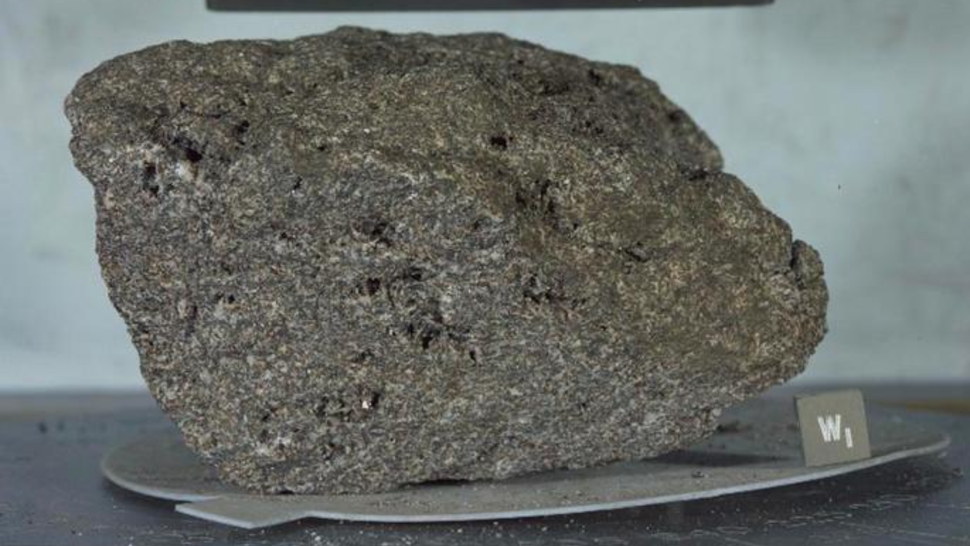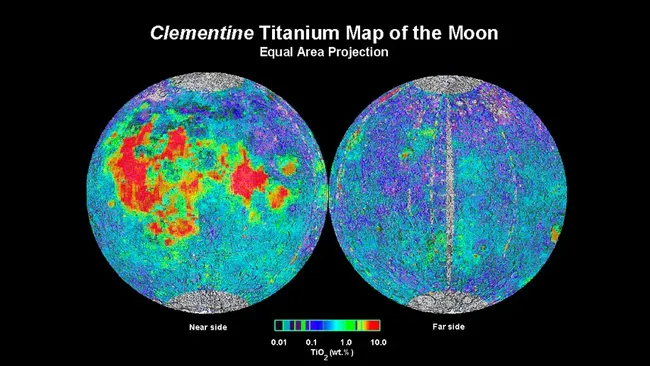Insights from Moon Rocks May Resolve Persistent Lunar Geology Mystery
Scientists may finally understand the process that creates a unique moon rock type.
Scientists have made a breakthrough in understanding the formation of a unique type of rock on the moon and its distribution across the lunar surface. This discovery has the potential to solve a long-standing puzzle and provide a more comprehensive understanding of lunar geology.
A team of international scientists has identified a crucial reaction that took place deep within the moon approximately 3.5 billion years ago. This reaction involved the exchange of iron in magma with magnesium in surrounding rocks, resulting in changes to the chemical and physical properties of the magma’s “melt” component. The melt is composed of ions from liquefied minerals.
According to Tim Elliott, a professor at the University of Bristol and co-leader of the research team, the origin of volcanic lunar rocks is a captivating story involving the cooling of a primordial magma ocean, which created an unstable crystal pile on a planetary scale. Understanding this history is crucial, and a key aspect is the presence of a unique magma type found only on the moon. However, explaining how these magmas reached the lunar surface and were sampled by space missions has been a challenging problem.
Since the NASA Apollo missions in the 1960s and 1970s, it has been known that certain regions of the moon’s surface contain high levels of titanium (Ti) in solidified ancient lava samples from the lunar crust. Subsequent data from moon-orbiting satellites revealed that titanium-rich magmas, known as “high-Ti basalts,” are widespread across the moon. However, the origin of these rocks has been difficult to explain.
Martijn Klaver, a research fellow at the University of Münster Institute of Mineralogy and co-leader of the team, stated that previous models were unable to replicate magma compositions that matched the essential chemical and physical characteristics of the high-Ti basalts. Particularly challenging was explaining their low density, which allowed them to erupt billions of years ago.
Overall, this recent breakthrough in understanding the formation and distribution of unique lunar rocks has the potential to provide valuable insights into the moon’s geological history.
The team embarked on solving this enigma by conducting laboratory experiments at high temperatures using molten rock, which aimed to replicate high-Ti basalts.
They merged the findings from these experiments with spectroscopic analyses of real high-Ti basalts brought back from the moon.
This blended approach unveiled a unique composition of various isotopes of elements, referring to elements with differing numbers of neutrons in their atomic nucleus, within high-Ti basalts.

The creation of these distinctive rocks can be attributed to the reaction between melt and solids in the magma beneath the lunar surface billions of years ago, as indicated by this fingerprint.
Elliot expressed his satisfaction in resolving this dilemma.
The findings of the team’s research have been published in the esteemed journal Nature Geoscience.
This article is republished from space.com under a Creative Commons license. Read the original article.
Do not forget to share your opinion with us to provide you with the best posts !




0 Comments